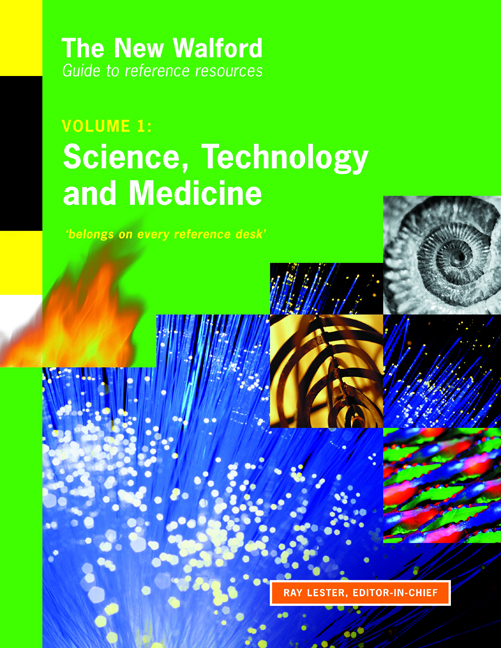Summary
How TNW is organized
Entries are hierarchically classified by subject area to three levels:
■ At the highest level are the Subject Parts, in the order Science, Medicine, Technology;
■ At the next level are the twelve Subject Groupings, six in Science, three each in Medicine and Technology;
■ Each Grouping is then sub-divided into around one hundred Subject Fields.
■ There are also two generic collections of entries: one at the start, describing resources covering the whole of STM (and, in some cases, all disciplines) the other at the end, highlighting tools that are especially valuable for information professionals.
Within this structure, descriptions of resources are allocated to one of the subject areas and then placed within one of thirteen Resource Categories:
[1] INTRODUCTIONS TO THE SUBJECT
[2] DICTIONARIES, THESAURI, CLASSIFICATIONS
[3] LAWS, STANDARDS, CODES
[4] OFFICIAL & QUASI-OFFICIAL BODIES
[5] RESEARCH CENTRES & INSTITUTES
[6] ASSOCIATIONS & SOCIETIES
[7] LIBRARIES, ARCHIVES & MUSEUMS
[8] PORTAL & TASK ENVIRONMENTS
[9] DISCOVERING PRINT & ELECTRONIC RESOURCES
[10] DIGITAL DATA, IMAGE & TEXT COLLECTIONS
[11] DIRECTORIES & ENCYCLOPEDIAS
[12] HANDBOOKS & MANUALS
[13] KEEPING UP-TO-DATE
For around a quarter of the resources, we have appended descriptions of associated or related resources (for example, additional items from the same producer or alternative views of the subject).
We do not duplicate or cross-reference entries within the set of resource categories for a specific subject area: if a resource description could equally well be placed within two (or more) categories, it will usually appear in the category earliest in the sequence. However, we do frequently cross-reference (but not duplicate) resource descriptions between different subject areas.
Entries, including cross-referenced entries, appear alphanumerically by title within each resource category. Where a resource has a particular area or country focus that is not apparent from its title, we have added a geographical indicator.
The TABLE OF CONTENTS lists all the subject parts, groupings and fields, as well as the two generic sections, in the order in which they appear in the volume.
The TOPIC INDEX provides alphabetical access to the subject headings used for the subject fields and groupings. It also lists more detailed and alternative subject headings to the ones chosen for the subject fields, indicating where commonly sought topics are located within our subject structure (for example, ‘Global warming’ takes you to entries located in Meteorology & Climatology).
- Type
- Chapter
- Information
- The New Walford Guide to Reference ResourcesVolume 1: Science, Technology and Medicine, pp. viii - ixPublisher: FacetPrint publication year: 2004

